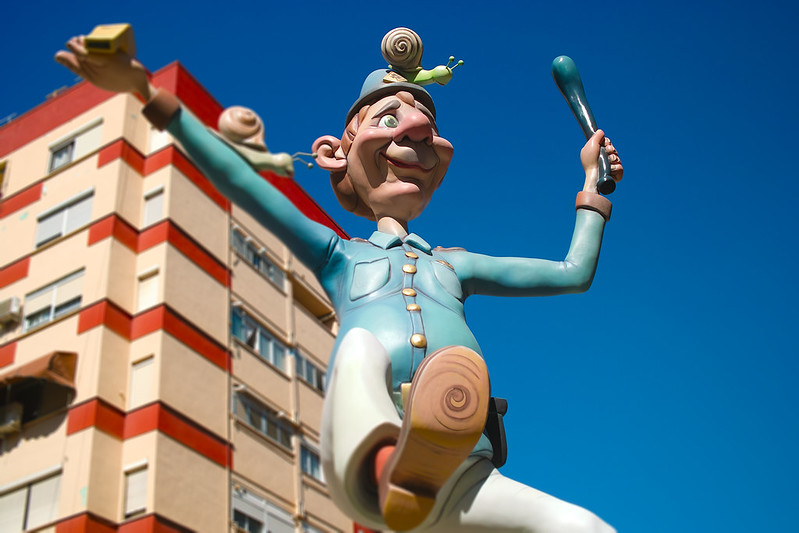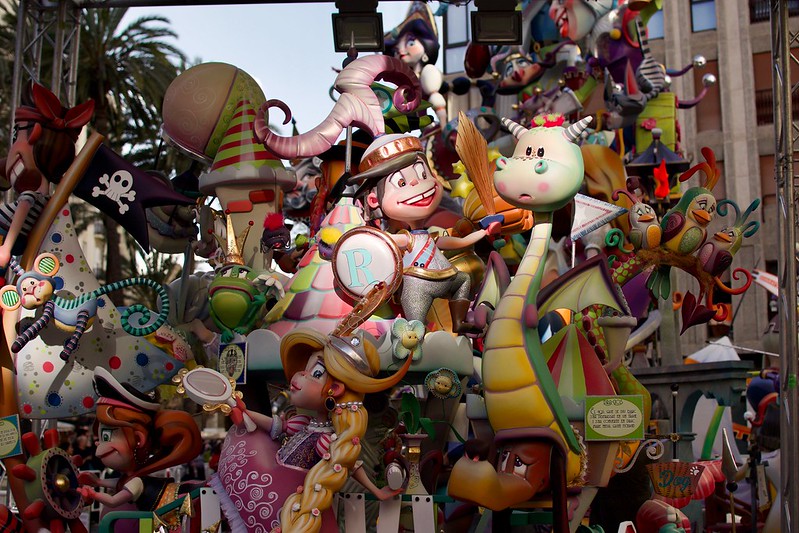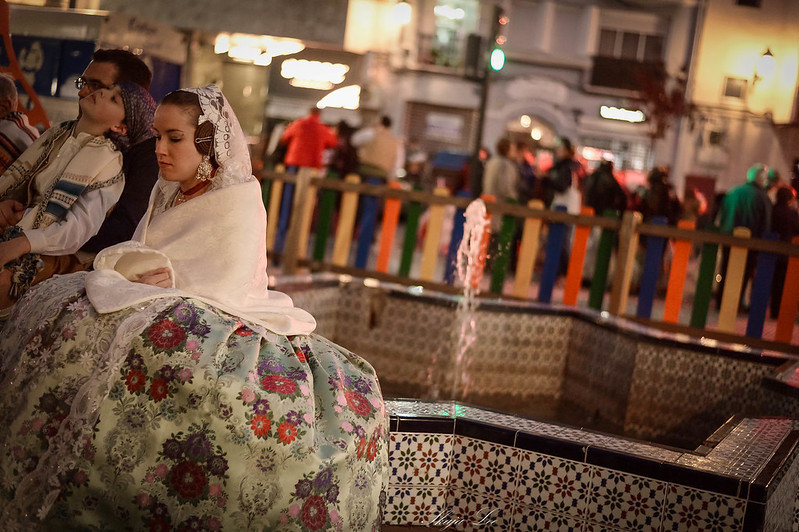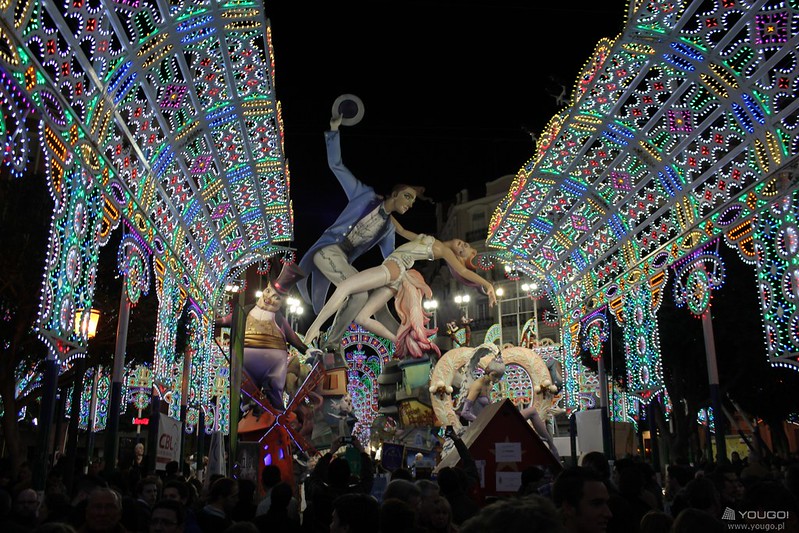Valencia Fallas
A Fiery Festival Where Art, Satire, and Tradition Intersect
2026/02/28 - 2026/03/18
Every March, the city of Valencia, Spain, comes alive with one of the country’s most spectacular festivals. From March 1st to 19th, the streets transform into an open-air museum, filled with giant sculptures and artistic creations. The climax of the festival is a breathtaking scene: these works of art are set ablaze all at once, creating a mesmerizing display of fire and light. Recognized by UNESCO as Intangible Cultural Heritage, Las Fallas attracts over a million visitors each year. It’s a sensory celebration where you can fully experience Valencia’s culture and creativity—the vivid colors, the thunder of firecrackers, the scent of fireworks, and the flavors of local cuisine.
Main Attractions
1. La Plantà: Installation of the Giant Figures
“La Plantà” means “the installation” and marks the official start of the festival. On March 15th, Valencia is transformed overnight into an open-air gallery as more than 400 enormous papier-mâché monuments (fallas) are set up across the city. Some reach up to 30 meters tall, featuring satirical and imaginative designs that captivate all who see them.
2. La Mascletà: Daytime Firecracker Show
La Mascletà, named after the word for firecrackers, is a unique midday fireworks event held every day at 2 p.m. in the Town Hall Square from March 1st to 19th. The focus is less on visuals and more on sound—deafening explosions and ground-shaking vibrations that last about ten minutes, immersing the crowd in an overwhelming auditory experience.
3. La Ofrenda: Floral Offering to the Virgin Mary
La Ofrenda, or “the offering,” is one of the festival’s most moving events, held on March 17th and 18th. Thousands of people in traditional dress parade through the streets with bouquets of carnations, heading to the Plaza de la Virgen. There, they cover a massive wooden statue of the Virgin Mary with flowers, creating a stunning floral tapestry over two days.
4. La Cremà: The Burning of the Fallas
La Cremà, meaning “the burning,” is the festival’s grand finale. At midnight on March 19th, all the fallas are set alight across the city. Months of artistry go up in flames in a spectacular ritual of renewal, as sparks fly and firecrackers explode, marking the end of the old year and the beginning of the new. This ceremony symbolizes cleansing and rebirth for the city.
5. Traditional Cuisine and City Atmosphere
During the festival, Valencia’s streets are lined with food stalls and pop-up bars. You can try authentic paella, horchata (tiger nut milk), and buñuelos (pumpkin fritters). The city is bathed in festive lights, and at night, the illuminated fallas and streets create a magical atmosphere. Strolling and sampling street food is the perfect way to soak up Valencia’s vibrant nightlife.
Cultural and Historical Background
The origins of Las Fallas date back to the Middle Ages, when carpenters would burn old wooden supports used during the winter to celebrate the arrival of spring. Over centuries, this simple ritual evolved into today’s spectacular festival, with the first written records appearing in the 18th century.
For Valencians, Las Fallas is much more than a festival—it’s a vital expression of identity and creativity. The year-round preparations, the community’s involvement in building the fallas, and the catharsis of La Cremà all strengthen social bonds and preserve cultural heritage. Its designation as UNESCO Intangible Cultural Heritage in 2016 highlights its significance not only for Valencia but for the world.
Participant Voices
I came to Valencia on a whim, not knowing about Las Fallas. On my first night, I woke up to what sounded like bombs going off. When I rushed outside, the streets were filled with people, music, and the most incredible fireworks I’d ever seen. Javier, a local, explained it was the daily Mascletà and invited me to join his group. Suddenly, I was in the thick of it—noise, smoke, energy. It was both terrifying and exhilarating. During La Cremà, I felt like I was part of something ancient and powerful. I’ll never forget the heat on my face as those giant sculptures went up in flames.
Fun Facts
The largest fallas can cost up to €900,000 to build and take a year to complete.
About 120 kg of gunpowder is used for each Mascletà, totaling over 2 tons during the festival.
Each year, one ninot (figure) is saved by public vote and preserved in the Fallas Museum as the “Ninot Indultat.”
More than 40 million carnations are used for the floral offering to the Virgin Mary.
Las Fallas is considered one of Spain’s top three festivals, alongside Seville’s Feria de Abril and Pamplona’s San Fermín.
Festival Dates
Las Fallas is officially held every year from March 1st to March 19th, with the main events concentrated in the final week.
The event schedule is subject to change. Please check the official website for the most up-to-date information.
Media

photo by Skaja Lee

photo by Marcos Gabarda Inat

photo by Skaja Lee

photo by Skaja Lee

photo by Praktyczny Przewodnik
Information
| Name | Valencia Fallas |
| Country | Spain |
| Area | Valencia, Valencia |
| Date | 2026/02/28 - 2026/03/18 |
| Link |
Upcoming Festivals
Whirling Dervishes Festival Turkey
A Mesmerizing Dance of Divine Love
2025/12/06Mevlana Celaleddin Rumi Commemoration Ceremony ( Şeb-i Arus ) Turkey
A Whirling Journey to Divine Love
2025/12/10Dia de la Virgen de Guadalupe Mexico
A Festival Weaving Faith, Fervor, and Mexican Identity
2025/12/11L'Escalade Switzerland
Geneva’s Grand Winter Festival of Courage, Chocolate, and Community
2025/12/12Umkhosi Wokweshwama South Africa
The Zulu First Fruits Festival—A Sacred Celebration of Land, Ancestors, and Renewal
2025/12/12Lucia Festival (St. Lucia's Day) Sweden
A Festival of Light Illuminating the Nordic Darkness
2025/12/15Las Posadas Mexico
The Luminous Quest for Sacred Shelter
2025/12/22Noche de Rabanos (Night of the Radishes) Mexico
A celebration blending art, farming heritage, and cultural traditions
2025/12/23Chant of the Sybil on Majorca Spain
A Medieval Prophecy Echoes Through Majorcan Christmas
2025/12/23‘Hatajo de Negritos’ and the ‘Hatajo de Pallitas’ Peru
A Christmas Festival of Rhythm, Faith, and Afro-Andean Heritage in Peru’s Ica Region